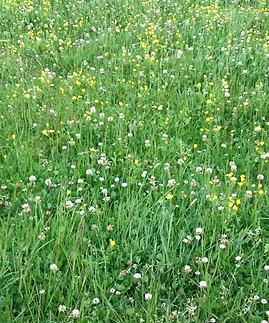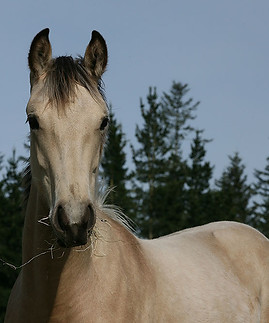Forage & Feed
Learn how to identify your grasses and recognise
undesirable broad leaf plants with our Learn Your Grasses Guide
Horses Eat Grass Don't They?
Yes but the grass we happen to have for them bears no resemblance to the grass of their natural habitats.
We have moved horses from the vast, semi-arid habitats they thrive in, where for most of the year they consume mature, stalky plants and only graze short, vegetative grass occasionally, to temperate regions of the world where fences and higher annual rainfall means short or lush green grass has become their staple diet.

Photograph Nancy Florence, Pine Nut Wild Horse Advocates
Short or lush green grass has a completely different nutritional profile to the mature grass the horse’s physiology is adapted to.
Expecting horses to stay healthy in this environment is like expecting penguins to thrive in a hot tub! Yes penguins live in water but the hot tub water is nothing like the water that suits penguins.
Horses are ‘Graminivores’ – herbivorous animals who feed primarily on GRASS, specifically "true" grasses, plants of the family Poaceae, also known as Graminae which includes tussocks, and sedges (along stream-sides).
*“Equids select graminoids over other species when available and consume large quantities of low quality forage”
Over millions of years, equids evolved on the world’s grasslands and steppes – regions where it is TOO DRY FOR TREES.
This means both they and their microbiota (which is an ‘ecological community’ in itself), have evolved in LOW NITROGEN habitats.
*****“Horses appear not only to be highly successful herbivores but also ones that select a diet with the highest fibre, lowest protein content within the grazing community”
The equine species survives in some of the harshest habitats on earth. Relatively recently, both with and without the help of humans, they occupy a wider range of habitats.
Wherever they thrive, it is invariably on forage that is high in fibre relative to protein. (Has a high C:N ratio)
Consequently horses have ‘thrifty genes’ – they have evolved to be metabolically efficient - an adaptive advantage needed for survival in harsh, NUTRIENT SPARSE environments – which turns out to be a DISADVANTAGE when you are in a domestic environment grazing comparatively nitrogen-rich pastures.
Clovers naturally have Crude Protein levels of 18-20%. When combined with other high production species like rye-grass or under certain environmental conditions, overall CP of the pasture can rise significantly up to 36%! (As CHH has found in multiple forage analyses of pasture that horses were consuming when they tipped over into laminitis, head-shaking and had multiple bouts of colic). Potassium is involved here too – another closely related story.
The trouble is this CP is not the quality protein that horses need. While some of this Nitrogen is part of the make-up of true protein – the rest is what is known as NPN (Non-Protein Nitrogen) or free-floating Nitrogen which horses are not designed to handle.
Such plants have an inverted C:N ratio ie too much Nitrogen relative to fibre carbohydrate. This happens especially when grass is grazed short all the time and doesn’t get a chance to grow any structure.
If horses were meant to be consuming such forage they would have the RUMINANT STYLE digestive system rather than the MONO-GASTRIC STYLE.
Ref:
Wild Equids – Ecology Management and Conservation - Jason I Ransom and Petra Kaczensky - Multiple observational studies have shown that grass species make up 83% -91% of the feral horse diet in all seasons, shrubs (about 8%) and herbaceous plants (1%) play a limited role, primarily in winter.
NRC Mineral Tolerance of Animals, Second revised edition 2005.
****The Evolutionary Strategy of the Equidae and theOrigins of Rumen and Caecal Digestion. Evolution 757:754 (Janis, c. 1976)













